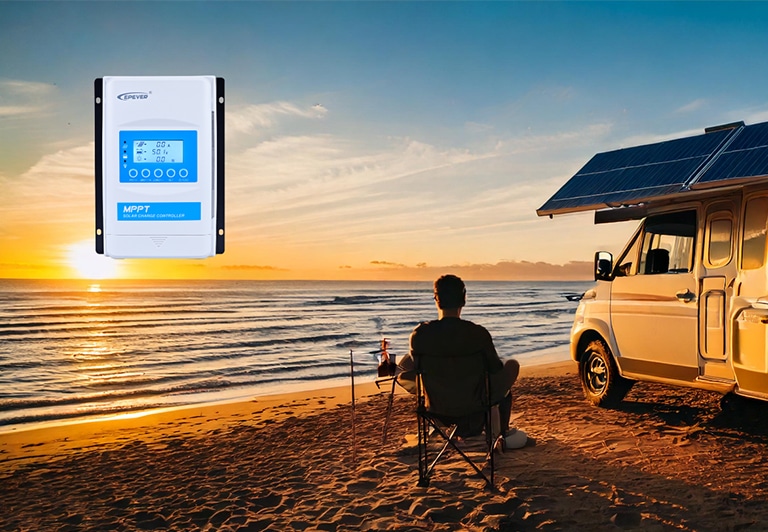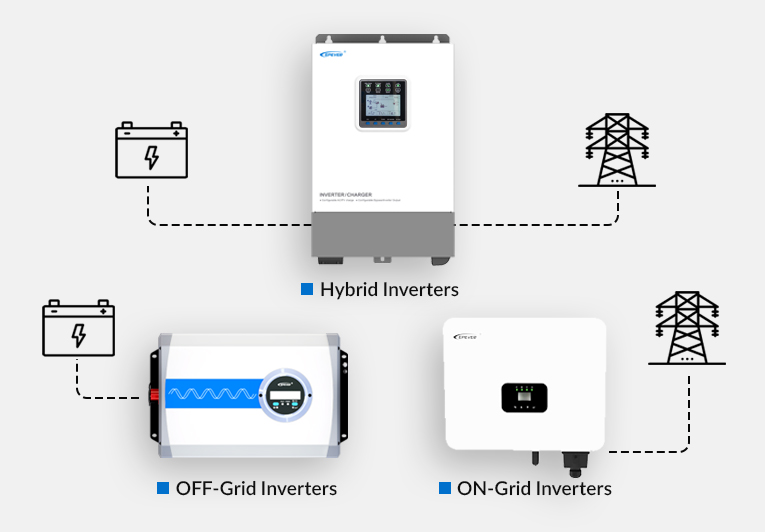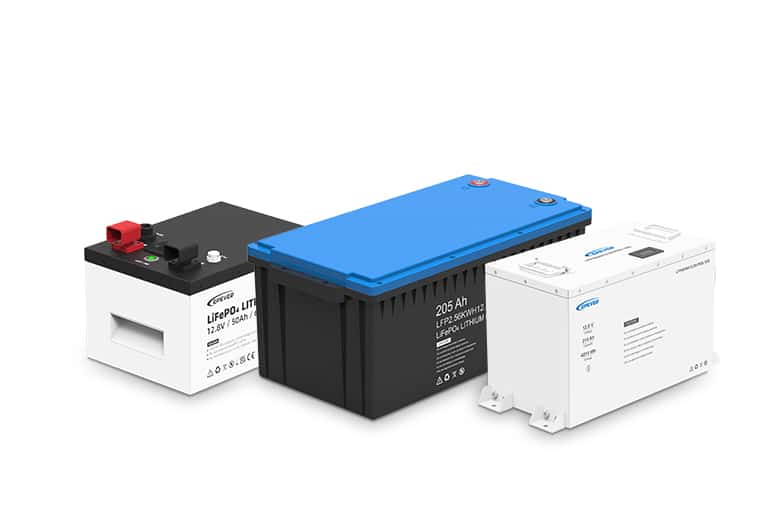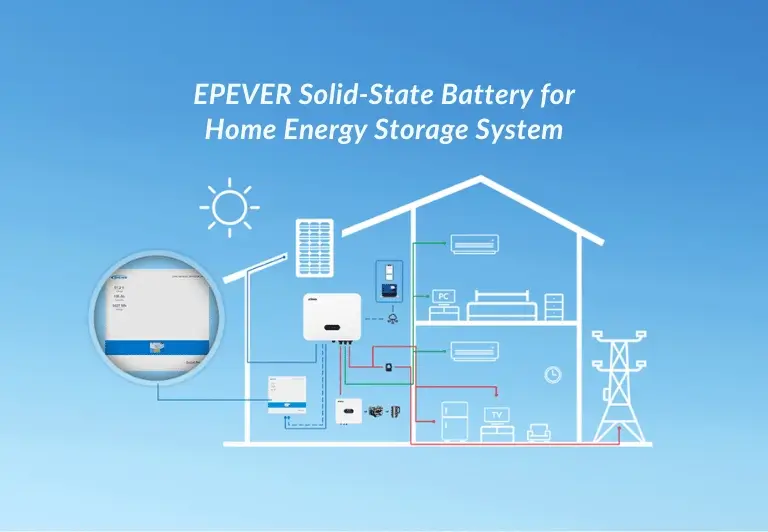Your Guide to Solar Charge Controllers for RV Adventures
- 31 December 2024
- 389 views
- No Comments
Your Guide to Solar Charge Controllers for RV Adventures
Your Guide to Solar Charge Controllers for RV Adventures
Imagine this: you’re parked on a secluded beach, the sun warming your face as you sip your morning coffee. No noisy generator, no crowded campgrounds, just you, the open road, and the quiet hum of your RV’s solar-powered appliances. This is the magic of RV solar, and at the heart of it all lies the solar charge controller.
This essential device acts as the “brains” of your solar power system, ensuring your batteries are charged efficiently and safely. But with so many options available, choosing the right one can feel overwhelming. Fear not, fellow adventurer! This comprehensive guide will equip you with the knowledge you need to make the perfect choice.
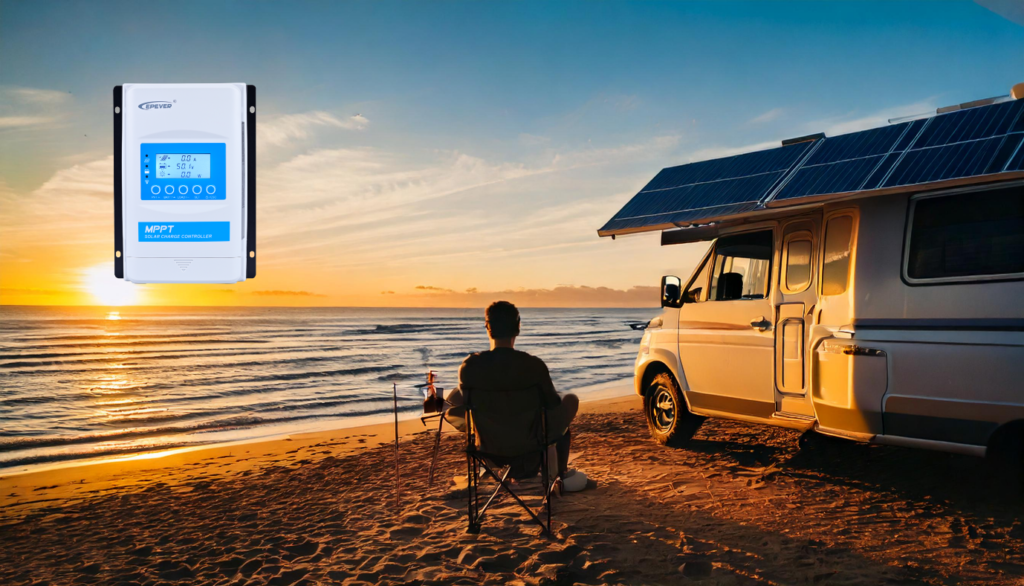
Why Your RV Needs a Solar Charge Controller
Think of your RV’s solar power system like a well-oiled machine:
· Solar Panels: The “engine,” captures energy from the sun and converts it into electricity.
Example: A 100-watt solar panel can generate around 5.5 amps of current in ideal sunlight (100 watts / 18 volts = 5.5 amps).
· Battery: The “fuel tank,” stores the collected energy for later use.
Example: A 100 amp-hour battery can store enough energy to run a 50-watt appliance for 2 hours (100 amp-hours x 12 volts / 50 watts = 2 hours).
· Charge Controller: The “regulator,” ensuring a smooth and controlled flow of energy from the panels to the battery, preventing overcharging and damage.
Example: If your solar panels produce 15 amps of current, you’ll need a charge controller rated for at least 15 amps, ideally 20 amps or more to provide a safety margin.
Without a charge controller, your batteries could be overcharged, leading to reduced lifespan, overheating, and even dangerous situations. A good charge controller acts like a vigilant guardian, maximizing your battery’s performance and longevity.
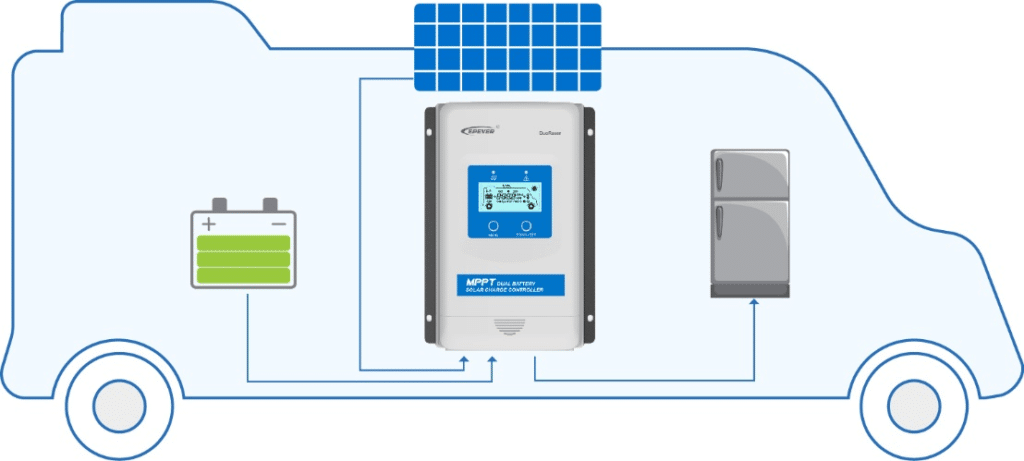
PWM vs. MPPT: Choosing the Right Technology
When it comes to RV solar charge controllers, you have two primary options:
1. PWM (Pulse Width Modulation) Charge Controllers
· The Basics: PWM controllers work by rapidly switching the current flow on and off, regulating the voltage going to your battery.
Example: Imagine a garden hose with a valve that rapidly opens and closes to control the water flow.
· Pros: Affordable, simple, and suitable for smaller systems.
· Cons: Less efficient than MPPT controllers, especially in low-light conditions or when there’s a significant voltage difference between the panel and battery.
Example: A PWM controller might only deliver 80% of the available power from your solar panels, while an MPPT controller could deliver 95% or more.
2. MPPT (Maximum Power Point Tracking) Charge Controllers1.
· The Upgrade: MPPT controllers are more sophisticated. They constantly track the output of your solar panels to find the “sweet spot” where they produce the most power, even in less-than-ideal conditions.
Example: Imagine a smart faucet that automatically adjusts the water pressure to maximize the flow.
· Pros: Significantly more efficient (up to 30% more) than PWM controllers, especially in cloudy or shaded conditions. They can handle higher input voltages, allowing you to connect panels in series for greater efficiency. Compatible with various battery types (lead-acid, lithium, etc.) and offer advanced features like battery temperature compensation.
· Cons: More expensive than PWM controllers.
For most RV applications, MPPT controllers are the clear winner due to their superior efficiency and performance.
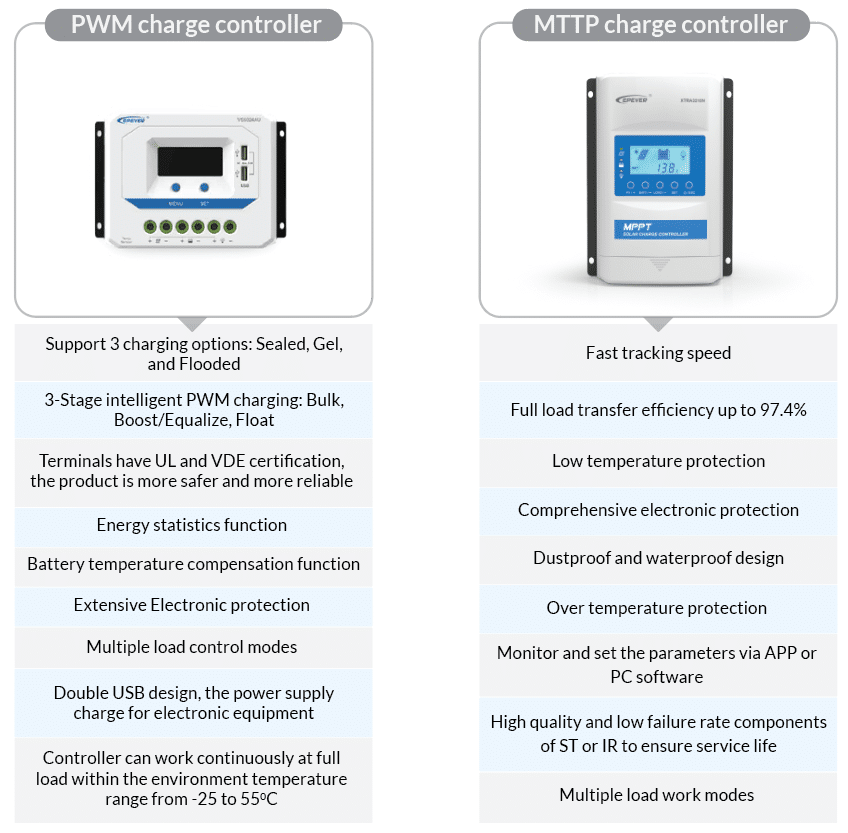
Finding Your Perfect Match: Key Considerations
1. Power Requirements
· Assess your energy needs: Make a detailed list of all the appliances and devices you’ll be powering in your RV (lights, refrigerator, air conditioner, laptops, etc.) and calculate their total power consumption.
Example: A 12V refrigerator using 5 amps draws 60 watts of power (12 volts x 5 amps = 60 watts).
· Match your solar panel output: Choose a charge controller with a current rating that exceeds the maximum output current of your solar panels.
Example: If your 200-watt solar panel array produces 10 amps, choose a controller rated for at least 15 amps, ideally 20 amps or more.
· Consider future expansion: If you plan on adding more solar panels or appliances later, choose a controller with a higher capacity to accommodate your future needs.
2. Battery Compatibility
· Lead-acid vs. Lithium: Different battery types have different charging requirements. Modern MPPT controllers often offer selectable battery profiles to ensure optimal charging for your specific battery type.
· Battery bank size: The capacity of your battery bank will influence the size and type of charge controller you need.
Example: A larger battery bank (e.g., 400 amp-hours) will require a charge controller with a higher current rating than a smaller battery bank (e.g., 100 amp-hours).
3. Input Voltage Range
· Match panel voltage: Ensure the controller’s input voltage range matches the output voltage of your solar panels.
Example: If your solar panels have an open-circuit voltage (Voc) of 40 volts, choose a controller with an input voltage rating of at least 40 volts, ideally higher.
· Higher voltage is better: MPPT controllers can handle higher input voltages, allowing you to connect solar panels in series. This reduces wiring losses and improves overall system efficiency.
4. Essential Features
· MPPT technology: For maximum efficiency.
· Overcharge/Over-discharge protection: Safeguards your batteries from damage.
· Temperature compensation: Adjusts charging parameters based on battery temperature for optimal performance and longevity. \
Example: In hot weather, the controller might reduce the charging voltage to prevent overheating the battery.
· Display and monitoring: Allows you to track system performance and identify potential issues.
· Remote monitoring (Bluetooth/WiFi): Conveniently monitor and control your system from your smartphone or computer.
5. Installation and Space Considerations
· Size and mounting: Choose a controller that fits comfortably in your RV’s electrical compartment.
· Cooling: Ensure adequate ventilation around the controller to prevent overheating.
EPEVER: Powering Your RV Adventures
Looking for a reliable and high-performance charge controller? Consider EPEVER. They offer a wide range of options to suit various needs and budgets, including:
· MPPT Controllers:
o XTRA Series: Versatile and efficient, with models ranging from 10A to 40A.
o XTRA-N G3 Series: Enhanced communication features and sleek design.
o Tracer AN G3 Series: Robust and reliable, with a wide operating temperature range.
o Tracer BP Series: IoT connectivity for remote monitoring and control.
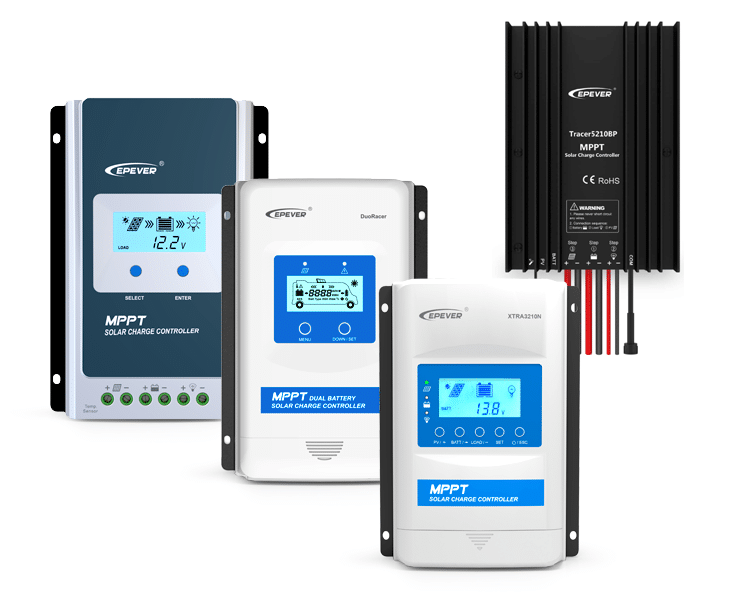
· PWM Controllers:
o VS-AU Series: Wide range of current options for various RV sizes.
o VS-BN Series: Compact design for limited spaces.
o EPIPDB-COM Series: Cost-effective dual battery charging.
· Unique Solutions:
o GoMate Series: Flush-mount design for a modern aesthetic.
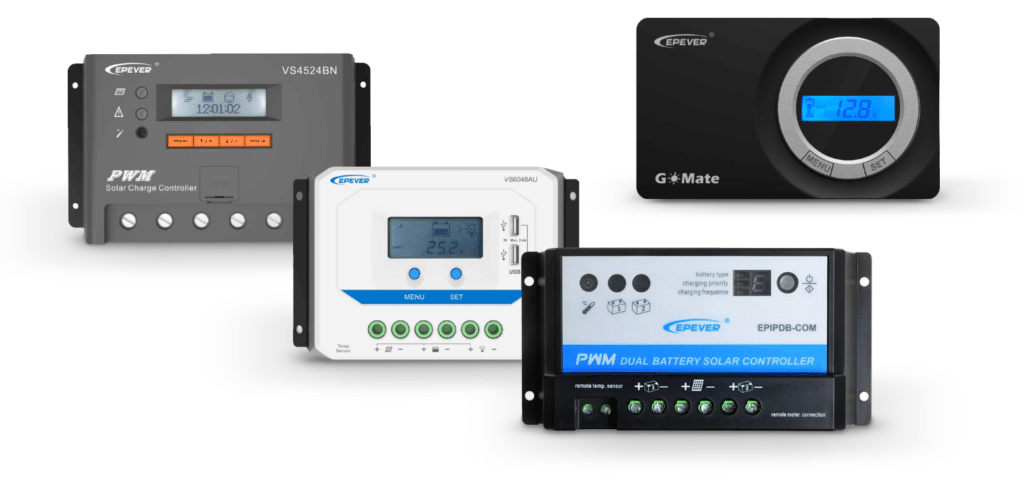
Conclusion: Empower Your RV Adventures with the Right Charge Controller
Investing in a quality charge controller is a crucial step towards building a robust and reliable RV solar power system. By carefully considering your power needs, battery compatibility, and desired features, you can choose the perfect controller to keep your batteries charged and your adventures going strong.
Ready to hit the road? Start your journey with confidence, knowing you have the best charge controller for your RV!

